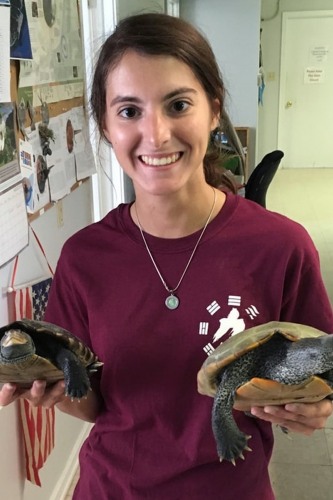
Amanda L Lyons '20
Biography
Due to various anthropogenic factors including shoreline hardening and coastal development, the diamondback terrapin (Malaclemys terrapin) is known to have declined throughout its range, but questions remain as to how diamondback terrapin populations interact across geographic distances and perceived barriers such as urban areas and roads under current levels of habitat fragmentation. Moreover, our knowledge of populations within individual geographic sites is limited due to terrapins’ idiosyncratic life history, as male terrapins do not leave the marsh to nest and must therefore be sampled in the water via trapping, which provides imperfect snapshots of population composition. With the help of the Kartzinel Lab, the Rhode Island Department of Environmental Management, The Wetlands Institute, and several other collaborators, I am attempting to address these gaps in our knowledge by conducting two genetic analyses: an analysis of genetic relatedness among terrapin populations from locations in MA, RI, CT, NY, and NJ, and an indirect quantification of male biodiversity in a putatively stable NJ population. Both parts of this study are unique in that they utilize novel molecular tools which have not yet been applied to diamondback terrapin population genetics and may prove to be broadly applicable across the range of this ecologically important species. The analysis of relatedness will employ restriction site-associated DNA sequencing (RADseq), sampling thousands of loci across the terrapin genome to obtain a robust understanding of variation among and between populations, while the paternity analysis will attempt to quantify the number of unique male genotypes within a population by comparing maternal DNA and offspring DNA sampled noninvasively from eggshells after hatching.